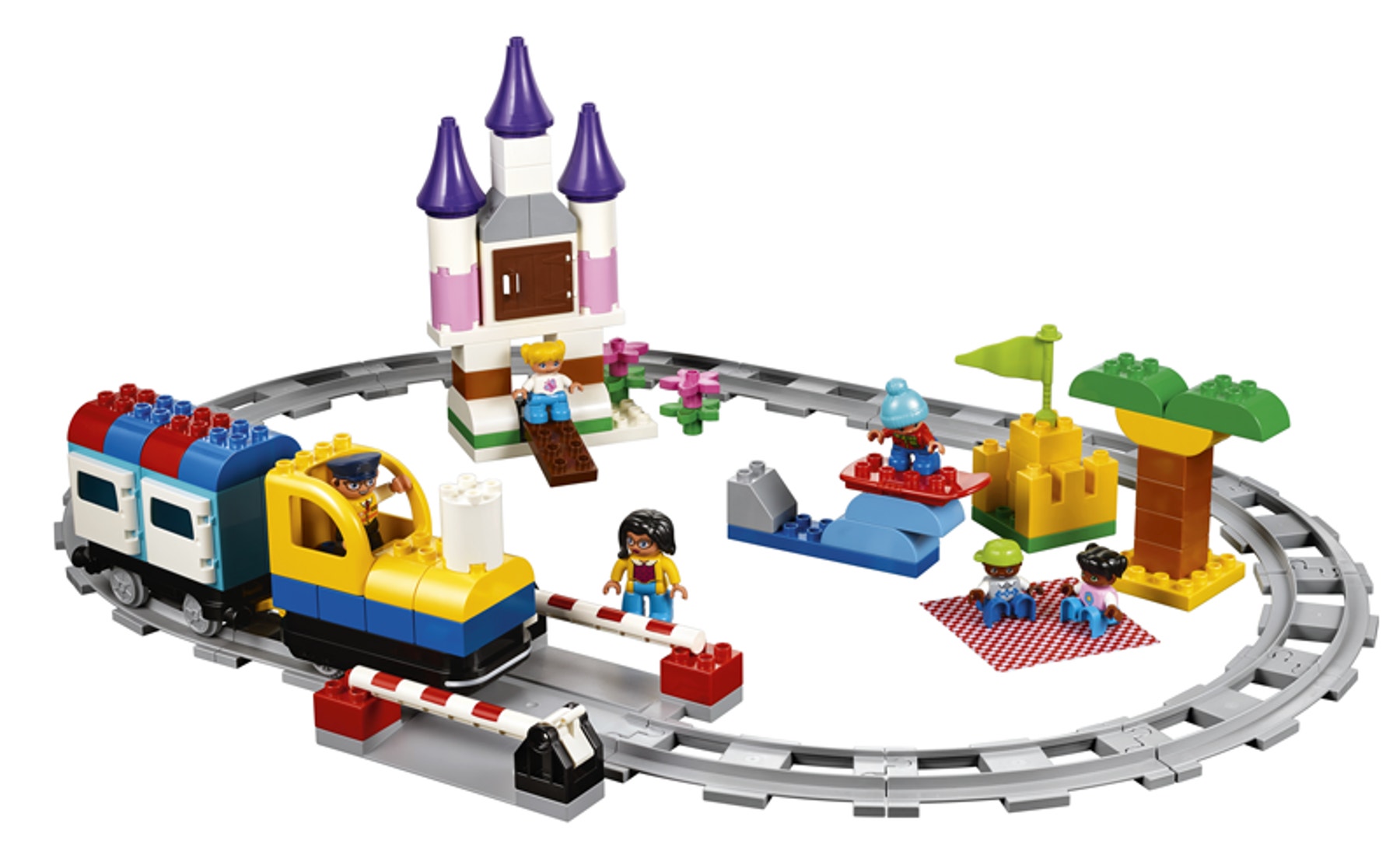O-Shaped Track - Looping
The objective of this lesson is for students to explore and understand use of the O-shaped track for repeating sequences.

Prepare
Review this lesson plan and choose what you need from the Teacher Support box.
If necessary, pre-teach these related vocabulary words: during, daily, weekly, often, usually.
Consider the abilities and backgrounds of all your students and decide when and how to introduce and differentiate lesson content, activities, or concepts.
Coding Concept: Looping – repeating a portion of code a set number of times until a process is complete.
Engage
Ask the students if there’s anything they do many times a day or week (e.g., brushing their teeth, showering, cleaning their room).
Tell the students that they’re going to play another game!
Model a sequence of hopping, jumping, running, walking backward, dancing, spinning, or other actions in a circle.
Ask the students to copy what you’ve just done and to repeat (i.e., loop) the sequence at least twice.
Tip: For younger students and beginners, limit your loop to just one or two actions.
Explore
Ask the students to combine curved and straight track pieces to make an O-shaped train track (six curved and four straight pieces is recommended).
Have students build two or three places they’d like to visit on the train. For inspiration, share the image below. Alternatively, students may use the Building Cards from the LEGO® Education Coding Express set for ideas or build any three places they wish.
Let’s go on a day trip! Use some LEGO® DUPLO® figures as passengers.
Tell the students that the passengers would like to have a picnic in the forest and then visit the beautiful castle. Can you help the passengers take the train to the forest and then to the castle?
Tip: Remind the students to use action bricks to make sure that the train will be able to stop at each location. Encourage them to use the blue action bricks for any stops with drinks, water, or gas.

Explain
Tell the students that the passengers enjoyed their trip so much that they’d like to do it again!
Talk with the students about how they could help make this happen.
Ask questions like:
- Will you be able to help the passengers take the same trip again? How? (The O-shaped track creates loops.)
- Which action bricks will you use and why?
Elaborate
Encourage the students to build a double-ended track next to the O-shaped track.
Talk about the difference between the two types of tracks.
Ask questions like:
- What’s the difference between these two types of tracks?
- Will you be able to repeat the same journey on the double-ended track? Why or why not?
Evaluate
- Ask guiding questions to elicit students’ thinking and their decisions while ideating, building and programming.
Observation Checklist
Review the learning objectives and educational standards addressed in this lesson (Teacher Support box).
Share specific student responses and behaviors at different levels of mastery.
Use the following checklist to observe students’ progress:
- Students can create an o-shaped track and can describe this as a loop.
- Students can describe, with prompting, the repeating sequence of events on the trip.
- Students can discuss the difference between a journey on the O-shaped track and one on the double-ended track.
Teacher Support
Students will:
- Understand use of the O-shaped track for repeating sequences
- Be able to compare different train track shapes and their uses
For up to six students
Coding Express set (45025)
- CSTA 1A-AP-10 Develop programs with sequences and simple loops, to express ideas or address a problem.
Extension
- CCSS.ELA-LITERACY.SL.K.4 Describe familiar people, places, things, and events and, with prompting and support, provide additional detail.




